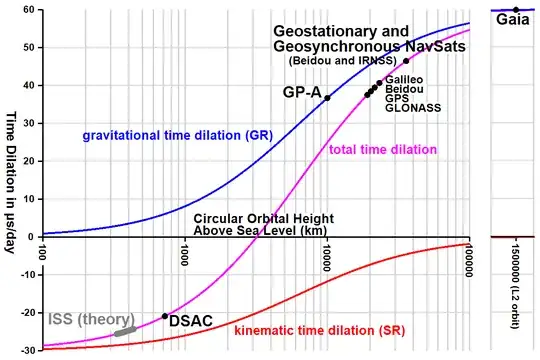There are many questions on stack exchange related to time dilation, and I think this answer gets closest to answering my question, but not quite (or at least not in a way that it is clear to me). I have read through many SE Q/A's on the subject and have not found an answer to the following:
- If two clocks are synchronized on earth and one is then put in orbit, can the one in orbit somehow communicate information that it would allow calculating the time difference vs. the ground, without bringing the clocks together into the same reference?
- Theoretically, how?
This is a question about theoretical empirical measurement, and whether general relativity prevents empirical measurement in this case; the question is not about calculating the orbital mechanics that would give you the satellite position and provide time to dilation calculated based on kinetics and gravity (ie, can time dilation be measured at a distance when spacetime curvature is unknown).
Theoretical example
If you have mirror clocks with one photon that counted ticks for each bounce between mirrors, and if the satellite and the earth ground station clocks are separated for long enough that the tick count differs substantially for the clock in space versus the clock on earth, then can the satellite simply send its tick count to the ground so that the tick values can be subtracted to estimate total time dilation? (Could tick counts then be streamed once per second to estimate "instantaneous" dilation?)
Is there some general relativity issue that prevents this communication because the ticks would be received on earth as being the same value? If so, how/why?
Other possible ways of asking the same question
Does communication itself between the different "gravity potentials" somehow offset what would be communicated, such that the time values communicated at a distance still result in equal values until they are brought into the same reference frame?
Is the communication of the rate of time passage between two reference frames affected by the dilation itself, such that the time measured ends up being the same when the communication reaches one side or the other?
(I am sure my terminology like "gravity potential" is incorrect, so please correct my terminology to reflect what is actually happening here in one way or the other.)
